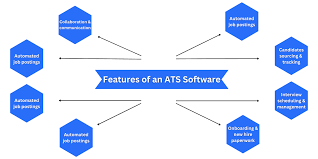
In the world of recruiting and human resources, efficiency, and streamlining of processes are key to securing top talent. This is where Applicant Tracking Systems (ATS) come into play. With the added advantage of onboarding modules, ATSs are changing the way organizations recruit, hire, and welcome new employees.
An Applicant Tracking System is a software application designed to automate the hiring process for HR departments and staffing agencies. These systems aid in processing job applications and resumes by sorting through candidates to determine which ones are the most qualified for a particular job opening. However, progressive ATS providers have evolved beyond mere tracking; they now offer comprehensive solutions that support the entire hiring lifecycle, including onboarding.
Onboarding is the process of integrating a new employee into an organization. It is a critical phase where a new hire learns about the company’s culture, processes, systems, and gets acquainted with colleagues. An ATS with integrated onboarding capabilities empowers employers to simplify this transition by automating administrative tasks and giving new employees all the tools they need to get started on the right foot.
The inclusion of onboarding within an ATS can facilitate several functionalities:
1. Pre-Boarding: Even before the new employee steps into the office, pre-boarding can be initiated with digital paperwork completion, policy dissemination, and providing access to training materials.
2. Automated Task Assignment: Onboarding often involves different departments such as IT for equipment setup, HR for benefits enrollment, and finance for payroll processing. An ATS with onboarding can automate these task assignments to ensure no step is missed.
3. E-Signatures: Collecting signatures for necessary documents can be done electronically, which helps speed up the process while maintaining records within the system.
4. Socialization: Facilitating early connections with team members through integrated communication tools can help build camaraderie from day one.
5. Progress Tracking: Employers can track the progress of a new hire’s onboarding process within the ATS dashboard, ensuring all procedures are followed in due time.
6. Consistent Experience: An ATS enables organizations to standardize their onboarding experiences across all departments or geographies ensuring consistency in their processes.
Integrating onboarding into an ATS means that recruiters can smoothly transition candidates from applicants to engaged employees without having to switch between multiple platforms. This seamless integration ensures a uniform data flow from recruitment to employment stages which not only saves time but also reduces errors that come with manual data entry across disparate systems.
Advancements in technology have also facilitated AI-powered assistants within ATS platforms that can assist in automatically scheduling interviews, reminding stakeholders of outstanding tasks, or even analyzing feedback from new hires about their onboarding experience.
With organizations vying for top talent in an increasingly competitive market, creating positive first impressions has never been more crucial. An ATS with robust onboarding functionalities allows companies to provide an efficient and engaging start for their new employees – aiding in retention while supporting their ongoing commitment to workforce development.
In conclusion, Applicant Tracking Systems equipped with onboarding capabilities represent a holistic approach to recruitment and human capital management. They streamline complex administrative tasks associated with hiring and integrating new staff, thus enabling businesses to focus more on strategic growth initiatives while providing a smooth beginning-to-end experience for candidates and recruiters alike.
